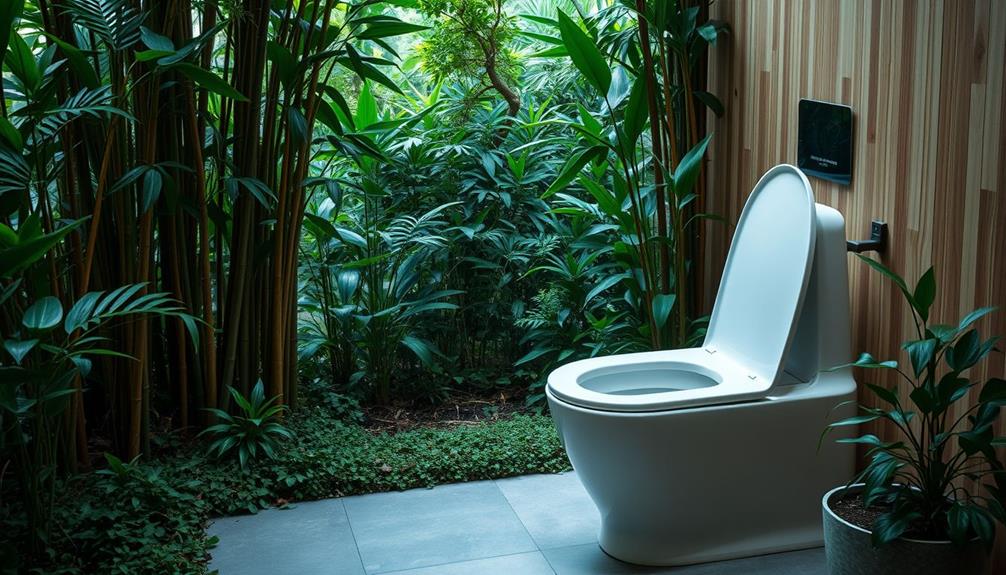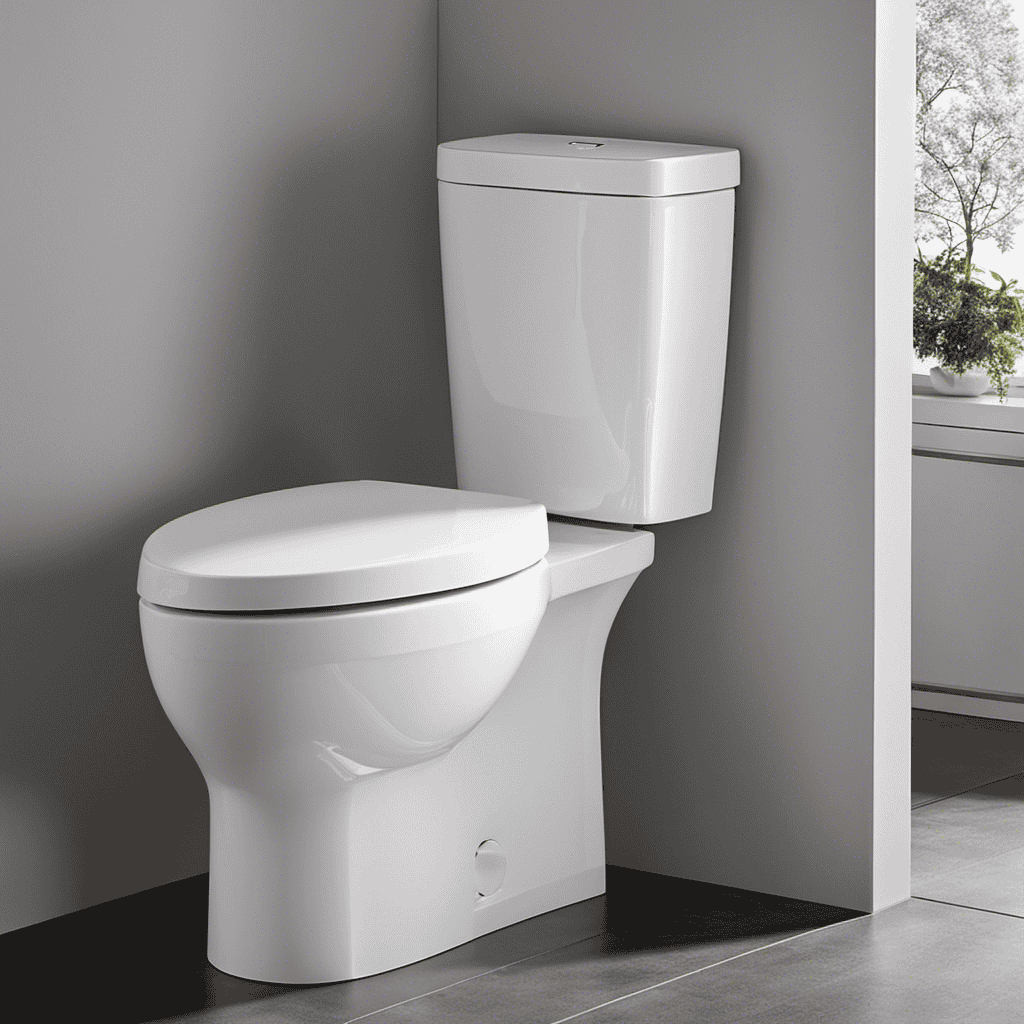Did you know that a leaking toilet flush valve can waste up to 200 gallons of water per day?
In this guide, I’ll show you how to replace a toilet flush valve, saving you money and helping the environment.
With just a few tools and some basic safety measures, you’ll be able to tackle this DIY project with confidence.
Follow the step-by-step instructions to remove the old flush valve, install the new one, and ensure everything is working smoothly.
Let’s get started!
Key Takeaways
- The flush valve is responsible for controlling the flow of water from the toilet tank to the bowl during flushing.
- Common problems with the flush valve include leaks, clogs, low water level, and weak or incomplete flushing.
- To replace a flush valve, you will need tools such as pliers and an adjustable wrench, as well as a new flush valve assembly and plumber’s tape.
- The process involves inspecting the old valve, removing it, cleaning the area, installing the new valve, reconnecting the water supply, and testing for proper functioning.
Tools and Materials Needed
To replace a toilet flush valve, you’ll need a pair of pliers, an adjustable wrench, a bucket, a new flush valve assembly, and some plumber’s tape.
Before starting the replacement, it’s important to understand the different types of toilet flush valves that are available. The most common types include the flapper valve and the dual flush valve.
The flapper valve is a rubber disc that lifts up when the toilet is flushed, allowing water to flow into the bowl.
The dual flush valve, on the other hand, has two buttons that control the amount of water used for flushing.
Now, let’s talk about common toilet flush valve problems. Some of the most frequent issues include leaks, weak flushes, and continuous running of water.
Preparation and Safety Measures
Before you begin, make sure you’ve taken the necessary safety precautions. Toilet flush valve maintenance is essential for ensuring proper functioning of your toilet. Troubleshooting common toilet flush valve problems can save you time and money. Here are some steps to help you with toilet flush valve maintenance.
First, check for any leaks or drips around the flush valve. This could indicate a faulty seal or a worn-out flapper. If you notice any leaks, it’s important to replace the faulty parts promptly.
Next, inspect the flush valve for any blockages or debris. A clogged flush valve can cause weak or incomplete flushing. Use a flashlight to carefully inspect the valve and remove any blockages using a wire hanger or a toilet auger.
Lastly, check the water level in the toilet tank. If the water level is too low, it could be a sign of a faulty fill valve. Adjust the water level according to the manufacturer’s instructions or replace the fill valve if necessary.
By following these steps, you can ensure the proper maintenance of your toilet flush valve and troubleshoot common problems effectively.
| Problem | Possible Solution |
|---|---|
| Leaking flush valve | Replace faulty seal or flapper |
| Clogged flush valve | Remove blockages using a wire hanger or toilet auger |
| Low water level | Adjust water level or replace fill valve |
| Weak or incomplete flushing | Check for blockages and adjust water level |
Removing the Old Flush Valve
Inspect the old valve for any signs of damage or wear before removing it. This step is crucial to ensure a successful replacement.
Toilet flush valve types may vary, but the signs of a faulty flush valve are often similar. Look for any leaks around the valve, water running continuously, or a weak flush. Additionally, check for any cracks or corrosion on the valve body or flapper.
Once you have thoroughly examined the old valve and determined it needs replacing, it’s time to move on to the next step. By removing the old flush valve, you will be one step closer to solving the problem.
Now, let’s proceed with installing the new flush valve.
Installing the New Flush Valve
Now that you’ve examined and determined the old valve needs replacing, it’s time to install the new one. Installing a new flush valve is a crucial step in maintaining the proper functioning of your toilet.
Flush valve maintenance is essential to avoid common flush valve problems such as leaks and weak flushing.
To begin, turn off the water supply to the toilet. Next, remove the old flush valve by unscrewing the retaining nut and lifting it out. Clean the area where the old valve was installed to ensure a proper seal.
Place the new flush valve in position and secure it with the retaining nut. Finally, reconnect the water supply and test the flush to ensure everything is working correctly.
Following these steps will ensure a smooth installation and help to prevent future issues.
Testing and Troubleshooting
After you’ve finished installing the new flush valve, it’s important to test and troubleshoot to ensure that everything is functioning properly. Here are some steps to follow:
-
Check for flush valve leaks: Fill the tank with water and observe if there are any leaks around the valve. If you notice any leaks, tighten the connections or replace the faulty parts.
-
Test the flush: Flush the toilet multiple times to ensure that the valve opens and closes properly. If the flush is weak or the valve doesn’t close tightly, adjust the chain or replace the valve if necessary.
-
Inspect the water level: After flushing, check the water level in the tank. It should be at the designated mark on the overflow tube. If the water level is too high or too low, adjust the float or refill valve accordingly.
-
Listen for abnormal sounds: While the tank refills, listen for any unusual sounds such as hissing or gurgling. These can indicate a problem with the flush valve or other components that require further inspection and troubleshooting.
Frequently Asked Questions
How Often Should a Toilet Flush Valve Be Replaced?
A toilet flush valve should be replaced every 5-10 years, depending on usage and maintenance. Over time, the valve can deteriorate, causing leaks and inefficient flushing. Regular inspection is key to determine when to replace the valve.
Can a Toilet Flush Valve Be Repaired Instead of Replaced?
Repairing a toilet flush valve is possible, but it’s not always the best option. Proper maintenance and regular inspections are key to preventing issues. However, if repair isn’t sufficient, replacing the valve is recommended.
What Are Some Signs That Indicate a Faulty Flush Valve?
If you’re wondering about signs of a faulty flush valve, there are a few things to look out for. Common indicators include a weak flush, water constantly running, or a toilet that won’t flush at all. Troubleshooting tips can help diagnose the issue.
Can I Use Any Brand or Type of Flush Valve for My Toilet?
Yes, you can use any brand or type of flush valve for your toilet. However, it’s important to consider the compatibility with your toilet model and the pros and cons of different flush valve types.
Are There Any Special Considerations for Replacing a Flush Valve in a Dual-Flush Toilet?
When replacing a flush valve in a dual-flush toilet, there are a few special considerations. Make sure to choose a flush valve specifically designed for dual-flush toilets to ensure proper installation and avoid common issues.
Conclusion
In conclusion, replacing a toilet flush valve may seem like a daunting task, but fear not! With the right tools and materials, a little preparation, and following the steps outlined in this article, you’ll be able to conquer this project with ease.
Remember to take safety measures and double-check your work for any potential issues.
So go ahead and confidently tackle this practical endeavor, knowing that you have the necessary knowledge and skills to successfully complete the task at hand.
Happy plumbing!










